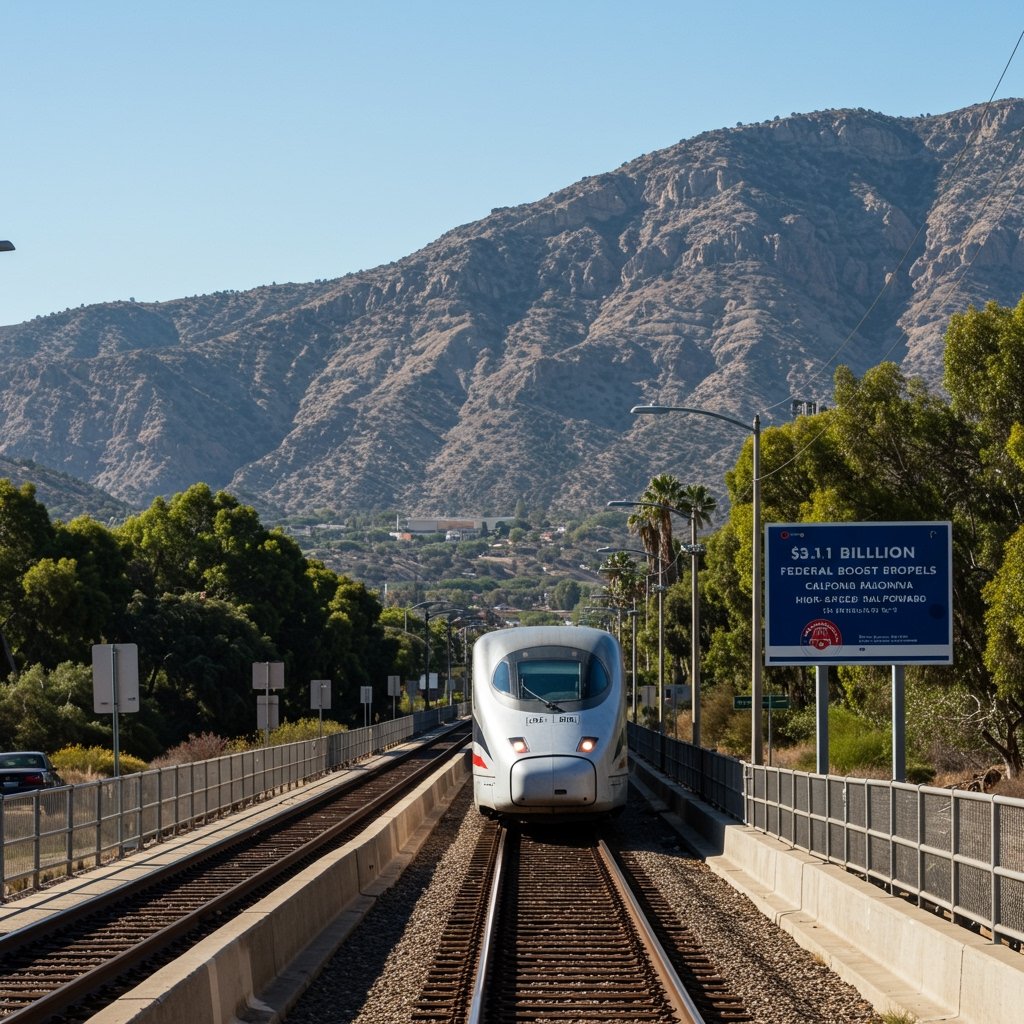Landmark Federal Investment
The California High-Speed Rail project, a cornerstone of the state’s future transportation infrastructure, received a monumental financial infusion on March 15, 2025. The California High-Speed Rail Authority (CHSRA) announced securing a substantial federal grant totaling $3.1 billion. This critical funding, awarded under the Infrastructure Investment and Jobs Act, represents a significant acceleration of construction efforts, particularly within the vital Central Valley segment. This substantial capital boost is poised to significantly advance the project timeline and foster considerable job growth along the designated corridor.
Details of the $3.1 Billion Allocation
The $3.1 billion federal grant awarded to the CHSRA is a direct outcome of competitive applications under the Infrastructure Investment and Jobs Act, a landmark piece of federal legislation designed to modernize America’s infrastructure. Announced on March 15, 2025, this allocation underscores the federal government’s commitment to supporting large-scale transit projects aimed at enhancing connectivity and sustainability. The funds are meticulously earmarked for specific, high-priority construction activities necessary to bring the vision of high-speed rail to reality. This isn’t merely a general allocation; it’s targeted funding designed to tackle key construction challenges and push the project past critical milestones in the near term. The sheer scale of the investment highlights its transformative potential for the project’s trajectory, providing the necessary capital to maintain momentum and expand the active construction footprint.
Accelerating Progress in the Central Valley
The primary focus area for this $3.1 billion federal grant is the ongoing construction within California’s Central Valley. Specifically, a significant portion of the funds is designated to accelerate work on extending grading and structures north from the city of Merced towards Madera. This segment is part of the initial 171-mile operating segment currently under construction in the Central Valley, which forms the backbone of the future high-speed rail line. Advancing grading involves preparing the land by leveling and excavating the path for the tracks, while the construction of structures includes building bridges, viaducts, and underpasses necessary to navigate existing roads, waterways, and terrain. By concentrating resources on this critical northern extension from Merced, the CHSRA aims to connect more of the valley infrastructure, bringing the initial operational segment closer to completion. This work is foundational, laying the physical groundwork upon which tracks and systems will eventually be installed. The scale of this investment allows for increased construction activity, potentially bringing more crews and equipment online to expedite these complex tasks across multiple work sites simultaneously within the Central Valley corridor.
Economic Impact and Job Creation
Beyond the concrete and steel, the $3.1 billion federal grant is expected to have a profound economic impact. A core objective of the funding is to foster substantial job growth along the construction corridor, particularly within the Central Valley. Infrastructure projects of this magnitude require a diverse workforce, ranging from skilled laborers, engineers, and construction managers to administrative support staff and material suppliers. The acceleration of construction activities made possible by this investment will translate directly into the creation of thousands of new jobs. These aren’t just temporary positions; the scale of the work means sustained employment opportunities for local communities. Furthermore, the economic benefits extend beyond direct employment. Increased construction activity stimulates local economies through the purchase of materials, equipment rentals, and the support of ancillary services like lodging and food for workers. This federal investment serves as a powerful economic stimulus, providing opportunities and fostering growth in a region poised to benefit significantly from improved transportation links in the future. The CHSRA has emphasized its commitment to local hiring and workforce development programs to ensure that residents along the corridor benefit directly from the jobs created by this construction boom.
The Broader Vision for California High-Speed Rail
While the current focus and the impact of the $3.1 billion grant are centered on the Central Valley, the California High-Speed Rail project holds a far broader vision. Ultimately, the plan is to create a modern, electrified high-speed rail system connecting major metropolitan areas across California, including San Francisco in the north and the Los Angeles Basin in the south. The 171-mile operating segment in the Central Valley, currently benefiting from this federal funding, is intended to be the foundational piece of this statewide network. Future phases of the project involve extending the line north towards the Bay Area and south towards Southern California, traversing diverse and challenging terrain. This long-term vision aims to provide a sustainable, efficient, and alternative mode of transportation that could significantly reduce travel times between the state’s major economic hubs, alleviate congestion on highways and in airports, and reduce greenhouse gas emissions. Securing substantial federal grants like this one is crucial for funding these complex future segments and maintaining the momentum necessary to realize the full scope of the project.
Looking Ahead: Challenges and Opportunities
The receipt of the $3.1 billion federal grant on March 15, 2025, marks a significant milestone and provides tremendous momentum for the California High-Speed Rail project. However, substantial challenges remain. Large-scale infrastructure projects inevitably face complexities related to land acquisition, environmental clearances, engineering challenges, and securing consistent funding streams over their multi-decade development lifecycle. While this grant significantly accelerates progress in the Central Valley and injects vital capital, the project will require continued state and federal investment to complete the statewide system. The effective management and deployment of these funds by the CHSRA will be under scrutiny, with an emphasis on delivering tangible construction progress and adhering to revised timelines. The opportunities presented by this funding are immense: the chance to build a state-of-the-art transportation system, create widespread economic opportunity, and establish a foundation for sustainable intercity travel in California for generations to come. This $3.1 billion allocation under the Infrastructure Investment and Jobs Act is a powerful testament to the potential perceived in the project and provides a critical boost at a pivotal stage of its development.


















